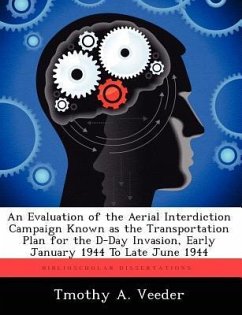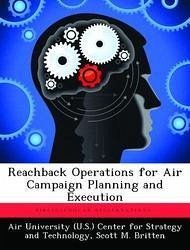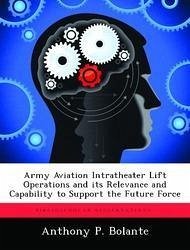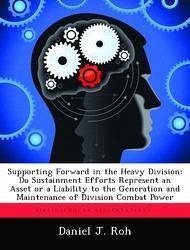
Sustainment in a Secondary Theater: An Analysis of the Effect of Transportation on Campaign Execution in North Africa, 1941-1942, and its Relevance to
Versandkostenfrei!
Versandfertig in über 4 Wochen
56,99 €
inkl. MwSt.

PAYBACK Punkte
28 °P sammeln!
This monograph discusses operational sustainment in a secondary theater of war. Essentially, this study asks, given horizontal escalation in a global conflict where central Europe is the primary theater, what is the effect of operational sustainment, specifically transportation, upon campaign execution in a secondary theater of war. This monograph is a historical analysis of the German World War II experience in the North African campaign. German operational sustainment, specifically theater infrastructure, sustainment base, lines of communication, transportation and interdiction are examined ...
This monograph discusses operational sustainment in a secondary theater of war. Essentially, this study asks, given horizontal escalation in a global conflict where central Europe is the primary theater, what is the effect of operational sustainment, specifically transportation, upon campaign execution in a secondary theater of war. This monograph is a historical analysis of the German World War II experience in the North African campaign. German operational sustainment, specifically theater infrastructure, sustainment base, lines of communication, transportation and interdiction are examined based on the available historical records and contemporary literature to isolate those essential sustainment conditions that impacted upon operational execution. Having determined these, those elements that influenced execution are then isolated and a set of relevant principles that impact on campaign execution are derived. Subsequently, the World War II secondary theater in North Africa is contrasted with a hypothetical yet potential secondary theater of war in Southwest Asia. After which, these sustainment effects are then compared with the evolving battlefield since World War II to determine the effect this has on the historically derived principles. Finally, the conclusions of this analysis are compared to current sustainment doctrine to determine operational and sustainment implications for Southwest Asia. Among the conclusions drawn from this analysis as to the effect of transportation upon campaign execution are: First, as supply is dependent upon transport, transport shortfalls or failures hastened by extended depth and interdiction will precipitate one's culminating point. Second and most importantly, in an overseas theater of significant depth where mobility is paramount, transport becomes a decisive point at the operational level. Finally, this study concludes that current AirLand Battle doctrine concerning operational sustainment, transportation and culminating poi














